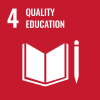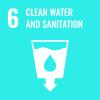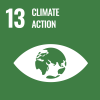Borena Zone, 27 March 2023 - Mohammed is a teacher at a school in Borena Zone, Oromia Region of Ethiopia. The last few years have seen the number of children attending his class diminish nearly daily.
“Many of these children leave because their families choose to seek water, pastures and assistance, which gives them more chances of surviving this drought than going to school. I cannot blame them,” he says.
In some cases, children in this area will only be able to attend school once a week, spending most of their days fetching and carrying water on foot wherever it is available. Others just leave and move to other places without notice. Unfortunately, this routine is common among thousands of drought-displaced children across Ethiopia. Five failed rainy seasons – and with a looming sixth – have led to the severest drought in the country, displacing more than 500,000 people.

A school in drought-affected Borena Zone, Ethiopia where children are often challenged to attend classes due to the effects of drought. Photo: IOM/Kaye Viray
“The reality is that even if the children go to school, it is either they are exhausted from their walks trying to get water, or they simply cannot concentrate in class because of the constant worry of not having water or food once they’re back home after school,” Mohammed adds.
Many regions in Ethiopia are currently experiencing one of the harshest droughts in decades. Over 4.5 million livestock have died since 2021, due to lack of water and pasture, destroying the livelihoods of millions. Hundreds of thousands of people have been forced to move in search of water, pasture, and urgent assistance.
The water trucking services that are being provided by the International Organization for Migration (IOM) have been a lifeline for drought-displaced families across Ethiopia. One water station is located a few metres from the school. The water mostly comes from a protected borehole recently rehabilitated by IOM. To ensure water quality standards during collection and storage, the chlorination process is performed right at the storage tank before distribution.
“Now that the water supply is next to the school and the internally displaced persons (IDP) site, more and more children are attending classes again. They no longer spend most of their days walking and looking for water. They can focus more on learning and on simply being children playing with their peers,” Mohammed shares.

Some of Mohammed’s pupils, who are now able to access both water and education through IOM’s support. Photo: IOM/Kaye Viray
The water source in the school is also being used to prepare food for the children and to clean the premises.
“Although IOM’s water trucking support is vital and caters to the urgent needs of IDPs, we must continue to work to provide long-term solutions which includes rehabilitation and construction of durable water supply systems,” explains Ester Ruiz de Azua, Emergency and Post-Crisis Programme Coordinator with IOM Ethiopia.
Twenty-four million people are living in drought-affected areas in Ethiopia. IOM in Ethiopia is scaling up its humanitarian response to provide much-needed assistance and is appealing for USD 59 million to support 2.5 million drought-affected people across the country in 2023.
IOM’s Water, Sanitation and Hygiene (WASH) interventions are reinforced by strong hygiene promotion activities carried out by a team of trained volunteers, which aims to improve hygiene practices and lead to positive behavioural changes.
The WASH response in drought-affected regions in Ethiopia is supported by USAID’s Bureau for Humanitarian Assistance (BHA) and EU Civil Protection and Humanitarian Aid (ECHO).
This story was written by Kaye Viray, Media and Communications Officer with IOM Ethiopia, kviray@iom.int.




